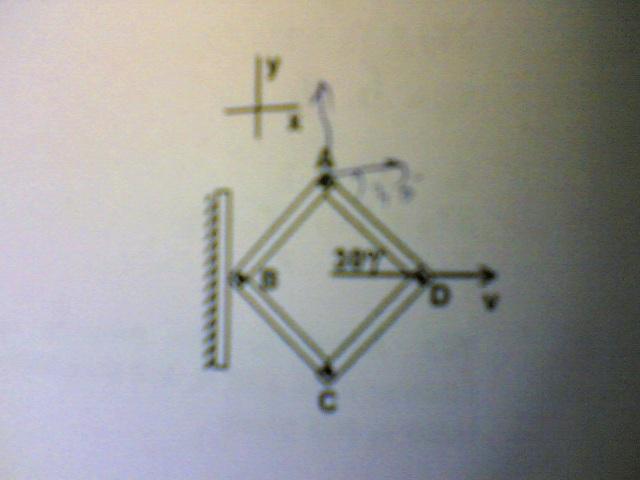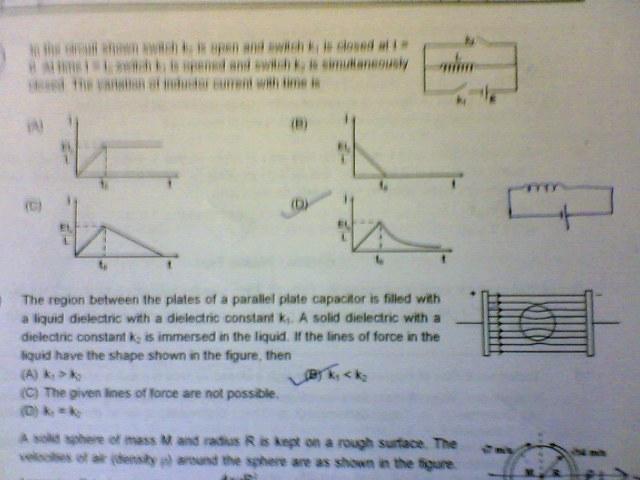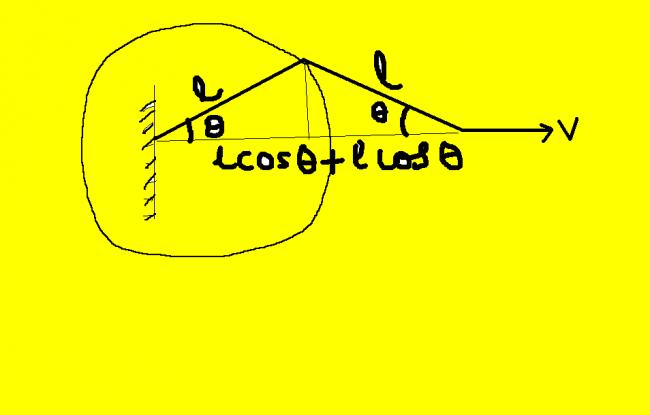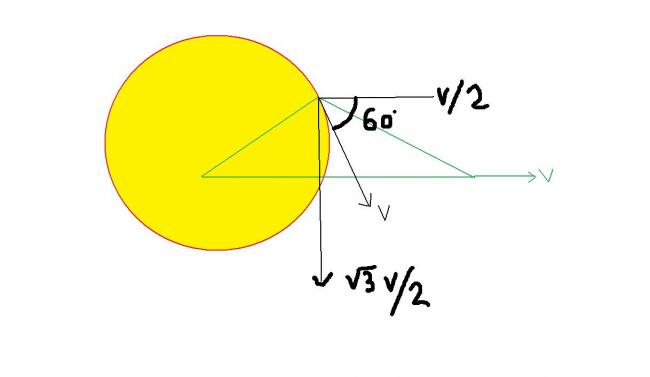v
44 Answers
for dielectric quest i feeel abhi is spot on!!!
"the medium with lesser dielectric constant will have greater no. of lines of force passing through it."
take eg. of metal sheets n u'll realise....
kmetal = ∞...... and u know dat they are insulators so zero lines of force
the medium with lesser dielectric constant will have greater no. of lines of force passing through it.
d(2lcosθ)/dt=v;
2l*(-sinθ)dθ/dt=v;
w=dθ/dt=v/2lsinθ......(magnitude)
(sign is negative as θ is decreasing)
now velocity of point A is w*l=v/2sinθ=v; (as θ=30)
diagram on next page.....vel. is tangential to the circle...
hey,,,,,,,,,,,,,,,,,,,,,,,,,,,,,,,,,,,,,,,,,,,,,,,,,,,,,,,,,,,,,,,,,,,,,,,,,,,,,,,
,,,,,,,,,,,,,,,
for the dilectric question i feel dat its option C becoz.. as we know dat the isolated sphere is an equipotential surface hence forth.. electric field lines shud be perpendicular.. and in the figure it means electric field lines should be radially outward [1] in the sphere. so as force [1] . so such lines forche cant be possible at all
n hey, priyam, in dat wire frame que, r all the arm lengths of the frame equal.. ie is it given as rhombus ??
n yaa...got dat wire frame one...
let O be the centre of the frame...
use OA^2 + OB^ = AB^2 - (1)
OA^2 + OD^2 = AD^2 - (2)
differentiate both sides of these two eqn wrt time...u will get the answer...
nice constraint concept....
badhey e j vapras ke su? [7] LOL .... gud gud lage raho
arey haan bhai v/2 x direction mein aur root3v/2 -y direction mein
i have already told tangential to circle and net velocity is v.
ok i will do a little bit of editing in diagram....
@priyam can u check the answer it sud b -ve j. or it is printing mistake.
yellow yellow dirty fellow!! [1] oh! this is also yellow.....

A wire frame...Velocity given to D is v.. and angle is 300... Find velocity of end A.
distance betwwn 2 conc particles in same disp. is λ/2=10mm
check that..
sorry wat i wanted to say is distance between to conc. particles having same maximum displacement in a standing wave is λ/2



